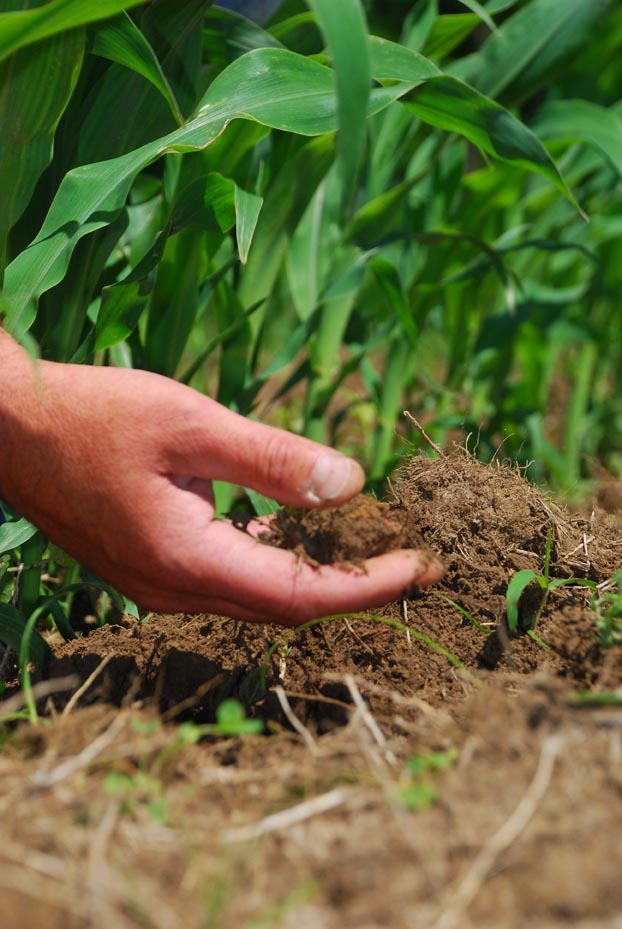
Improve Soil Health to Reduce Erosion
Farmers who apply soil health practices like cover crops are the least affected by weather extremes.Besides cover crops, conservation practices that improve soil health include no-till, crop rotations and responsible nutrient and pest management applications.
May 22, 2013

From drought to flood conditions, it seems there is no longer a “normal” growing season for Iowa farmers. A year of drought in 2012 was followed by a cool, wet spring this year. These types of weather extremes can be very damaging to Iowa’s soils, but conservationists are finding that farmers who apply soil health practices like cover crops are the least affected.
Besides cover crops, conservation practices that improve soil health include no-till, crop rotations and responsible nutrient and pest management applications.
Several southeast Iowa counties received 6-8 in. of rain on April 17. Shawn Dettmann, area resource conservationist for USDA’s Natural Resources Conservation Service (NRCS) in Fairfield, says soil health practices combined with erosion control practices – like contour farming, terraces, contour buffer strips and grassed waterways – provided the most protection from erosion caused by heavy rains.
Like what you're reading? Subscribe to CSD Extra and get the latest news right to your inbox!
“In fields where soil was disturbed through tillage, there are some rough areas with a lot of soil erosion,” says Dettmann. “In fields with high amounts of crop residue and little to no tillage, there was significantly less erosion, and in fields with these practices plus cover crops, there was little to no erosion.”
Read more from Erosion Control about improving soil health.
Hear what Mike Starkey, Indiana farmer, has to say about soil health and what it means to him and the land he farms in this profile video from USDA NRCS:
You might also like:
Nitrogen Carryover Unlikely After Wet Winter, Spring
You May Also Like



